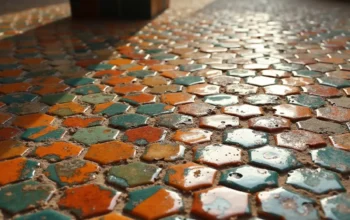
As solar energy becomes increasingly popular, many homeowners are looking for ways to make the installation process more affordable. While the initial costs of solar panel installation can be significant, there are several strategies you can employ to reduce expenses without compromising on quality.
This post will explore six cost-effective tips for installing solar panels on your roof, helping you maximize your investment in clean, renewable energy.
Contents
Assess Your Roof’s Condition and Suitability
Before installing solar panels, it’s crucial to evaluate your roof’s condition and suitability. Start by inspecting your roof for any damage or structural issues that need to be addressed. Repairing or replacing your roof before installation can prevent costly removal and reinstallation of panels in the future.
Consider factors like your roof’s orientation, slope, and available space when planning your solar system. South-facing roofs with a slope between 15 and 40 degrees are generally ideal for maximizing sunlight exposure.
If your roof doesn’t meet these criteria, don’t worry – alternative solutions may still be available to optimize your solar panel performance.
Choose the Right Solar Panels
Selecting the appropriate solar panels for your needs is essential for cost-effectiveness. While monocrystalline panels are more efficient, polycrystalline panels are often more affordable and may be suitable for homes with ample roof space. Compare the efficiency ratings and prices of different panel types to find the best balance for your budget.
Consider the long-term performance and durability of the panels when making your decision. Higher quality panels may cost more upfront but can provide better energy production and longevity, ultimately saving you money over time. Look for panels with strong warranties and a proven track record of performance.
Optimize System Size and Design
Properly sizing your solar system is crucial for maximizing cost-effectiveness. Analyze your energy consumption patterns and work with a solar professional to determine the optimal system size for your needs. Avoid oversizing your system, as this can lead to unnecessary expenses.
Consider the layout of your roof and plan the most efficient panel placement. Take into account factors such as chimney location, vents, and skylights when designing your panel layout. Proper planning will help maximize energy production and maintain the aesthetic appeal of your home.
Explore Financing Options and Incentives
Take advantage of various financing options and incentives to reduce the upfront costs of solar installation. Research federal, state, and local incentives, including tax credits, rebates, and grants. The federal solar investment tax credit currently offers a 30% deduction on installation costs, significantly reducing your overall expenses.
Consider solar loans or power purchase agreements (PPAs) if you prefer not to pay the full cost upfront. These financing options can help spread the cost over time, making solar more accessible. Be sure to compare different financing options and their long-term implications before making a decision.
Time Your Installation Strategically
Timing your solar panel installation can lead to potential savings. Some installers offer discounts during their off-peak seasons, typically in late fall or winter. Additionally, planning your installation during a time when you’re already doing roof work can reduce overall costs by sharing expenses like scaffolding.
Consider the impact of seasonal changes on your energy consumption when timing your installation. Installing panels before peak energy usage seasons (like summer in hot climates) can help you start saving on energy bills right away. This strategic timing can improve the return on your investment.
DIY Where Possible, But Know Your Limits
While professional installation is recommended for most homeowners, there are aspects of the process where you can save money by doing it yourself. Research and prepare the necessary permits and paperwork on your own to reduce administrative costs. You can also handle simple tasks like clearing the installation area and removing obstacles.
However, it’s crucial to know your limits and prioritize safety. Leave the actual panel installation and electrical work to certified professionals. Improper installation can lead to reduced efficiency, voided warranties, and safety hazards.
Balance the potential savings of DIY work with the importance of a properly installed and safe solar system.
Conclusion
Installing solar panels on your roof is a significant investment in sustainable energy and long-term savings. By following these cost-effective tips, you can make the process more affordable without compromising on quality or performance.
Research your options, use available incentives, and hire trusted professionals for a successful solar installation. With smart planning, you can harness solar power affordably, creating a greener, cost-effective future.



